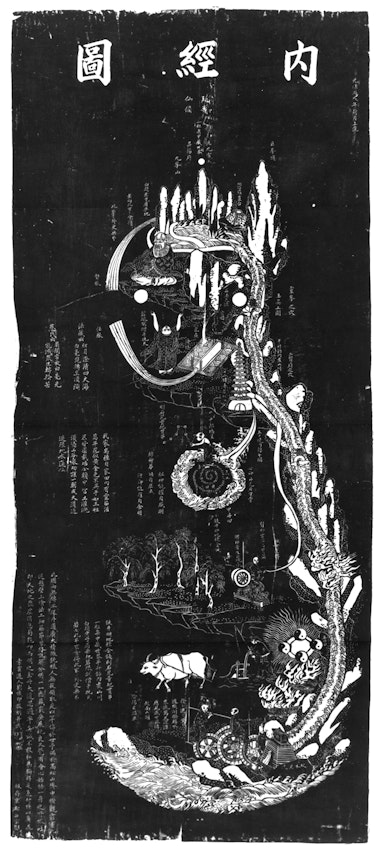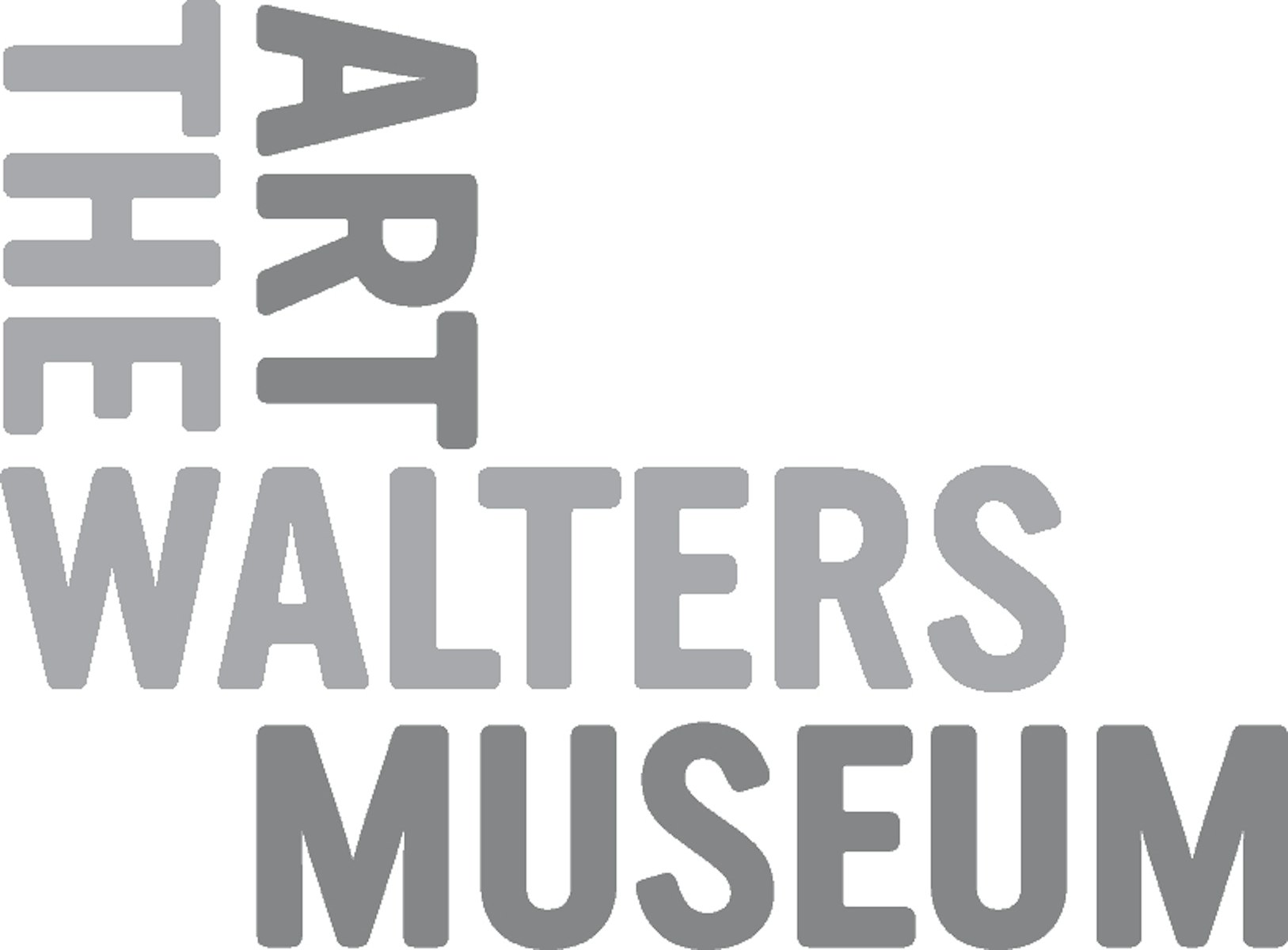
Chart of the Inner Landscape (1886)
The Nei Jing Tu (Chart of the Inner Landscape) is a magnificent Taoist depiction of the human body as a microcosm of the universe, in which fundamental forces, ancient spirits and celestial bodies all have their place. The follower of the Tao (natural order) must gently try to bring themselves into closer harmony with it through meditation, breathing exercises, feng shui and other practices. Then the body may become as it is also figured in the chart — an alchemical furnace capable of producing the elixir of life. The chart is designed to help the Taoist “prolong longevity” and, the ultimate goal, “attain immortality and Buddhahood”.
It took on its current form in 1886 after a priest named Liu Chengying happened across the original in the library of a mountain temple, painted on an old silk scroll. In the colophon at the lower left of the chart, Liu describes the fascination he felt:
“...By chance, it was hanging on a wall. The painting was finely executed... I examined it for a long time and my comprehension grew. I began to realize that exhalation and inhalation, as well as expelling and ingesting, of the human body are the waxing and waning as well as the ebb and flow of the cosmos. If you can divine and gain insight into this, you will have progressed more than halfway into your inquiry of the great Way of the Golden Elixir. In truth, I did not dare not keep this [painting] to myself alone. Therefore I had it engraved on a printing plate for wider dissemination.”
The human figure in the chart faces left. At the top of its head, wrinkly brain tissue is represented by the nine craggy peaks of Mount Kunlun (heavenly abode of the immortals and source of the Yellow River). Its spinal cord is a meandering watercourse flowing out of the head. Divine water (qi of Yin) rushes down from the head to be met with fire (qi of Yang) rising up from the abdomen. With this equalisation achieved, where the four Yin-Yang symbols radiate, the elixir can finally be formed.
Some of the chart’s most wonderful details include: Laozi meditating in the forebrain; a twelve-storey pagoda standing in for the throat; a flaming spiral of a heart in which a boy strings together coins to form the Big Dipper (thought of as the centre of the cosmos); kidneys represented by a woman spinning her wheel (who also symbolises the star Vega); and intestines in the shape of a buffalo ploughing and planting the elixir (or herb) of life. Other organs appear only as text: “The spirit of the lungs is Brilliant Splendour”, “The spirit of the liver is Dragon Mist”, “The spirit of the spleen is Continuously Existing”.
The above version of the chart is a rubbing from the original stele (stone surface) engraved in 1886 at the behest of Liu Chengying. The stele can be found today encased in a wall of the Baiyun Guan (Abbey of the White Clouds) in Beijing. According to the East Asian Library at Berkeley, the ancient technique of rubbing (aka “inked squeezing”) appeared in China at the same time if not earlier than printing.
Aug 18, 2015









